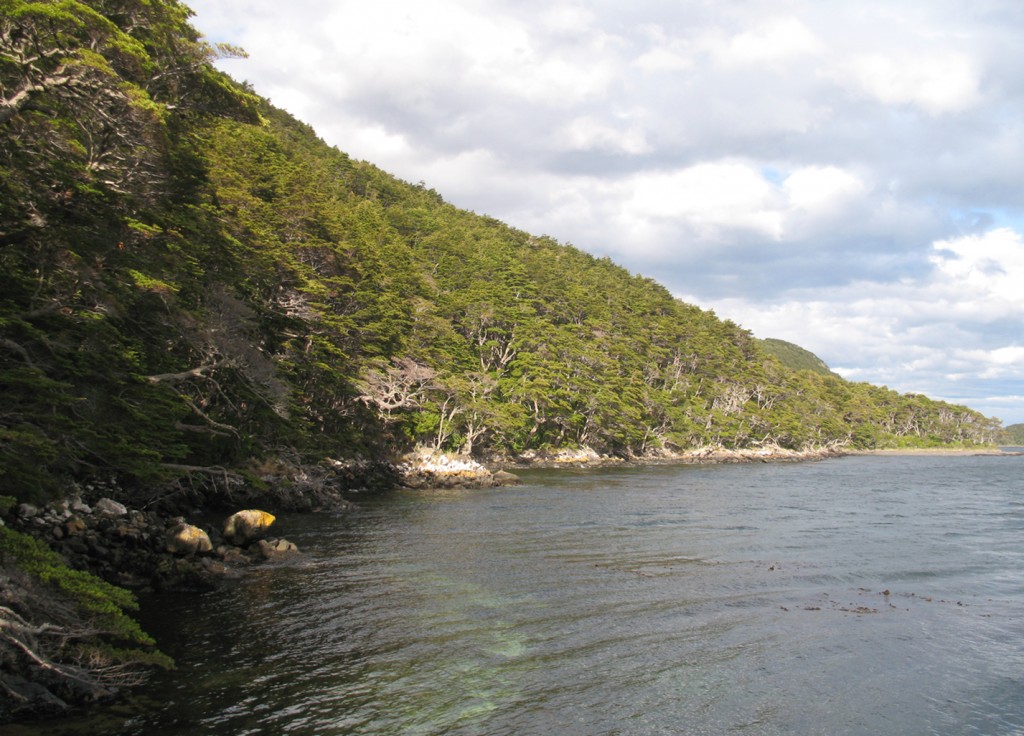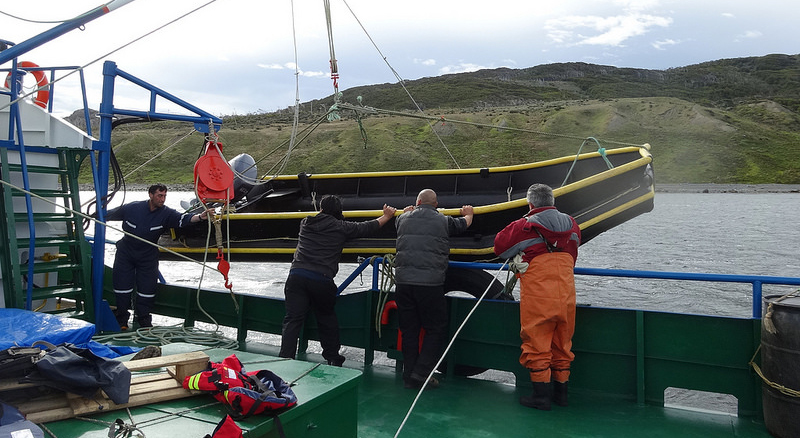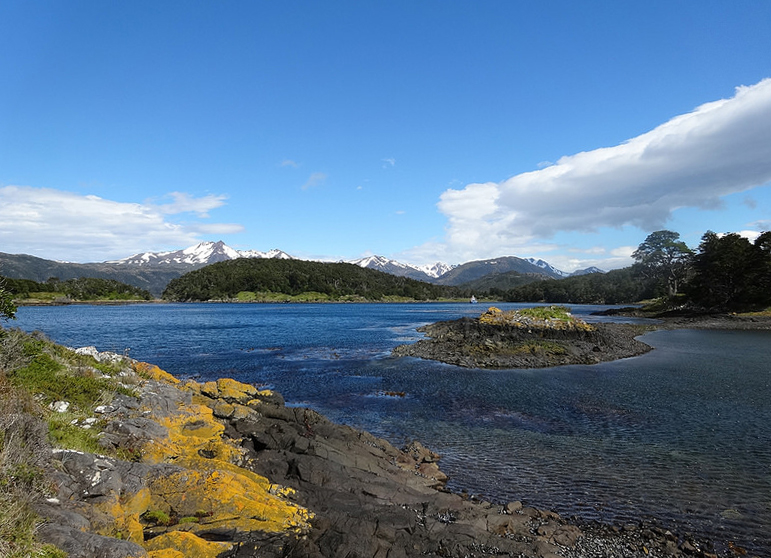From the Field: Bill Buck in Cape Horn 2014, Part 5
Posted in Travelogue on March 21, 2014 by Bill Buck
William R. Buck, Ph.D., is the Mary Flagler Cary Curator of Botany at The New York Botanical Garden. Every January for the last three years, Dr. Buck, a moss specialist, and a team of colleagues have journeyed to the Cape Horn region at the southern tip of South America, to document the area’s rich diversity of mosses and search for new species.
January 14, 2014; Isla Navarino, Caleta Douglas (55°10’S, 68°7’W)

Yesterday our activities were dominated by water. Due to a shortage of fresh water, we could no longer bathe until the tank was refilled, and flushing the toilet was accomplished with a bucket of sea water. We started the day at Bahía Windhond on the south shore of Navarino. I’d never had the opportunity to collect on this side of Navarino, so I was glad to see this prominent bay at last.
Bahía Windhond is fairly exposed to Antarctic weather to the south, and this weather had halted my previous attempts to visit the area. This time, the weather was surprisingly good, with clear, sunny skies tempered by a blustery wind. The area, which is still used for cattle farming, is heavily disturbed. Nevertheless, small microhabitats harbor native species of mosses, and because of the cattle there are extensive areas of open soil, offering habitats for weedy species that thrive until they are out-competed by larger plants.

Because most of the area was pasture, I didn’t have high hopes for a rich flora. However, it was obvious that, even in the face of so much habitat destruction, the mosses still found a way. The first evidence of this came as I investigated the cattle-grazed barberry shrubs. Epiphytes nearly choked the small twigs set deep within, safe from hungry cows. Considering the thorny branches, I might also have been discouraged, but I decided a few puncture wounds were a fair price for these treasures. I collected at least six different mosses—spanning four genera—from the barberry.
As I was walking through the fields, I took note of a few small mosses colonizing the hoof prints of the cattle. I spent a good half-hour crawling around on my hands and knees, picking up small patches of moss glistening against the black soil. The members of our group who headed for more natural habitats had considerably less success than I did, strangely enough, but my motive for choosing this altered landscape was that such habitats are rare in this sparsely-settled region.
We had a quick lunch upon returning to the ship before addressing the looming concern of water. We needed to make a three-hour trip to restock. The journey would take us across open seas and likely prove rough. In time we reached Caleta Castillo, just off the east coast of Isla Hoste (55°14’S, 68°15’W). We disembarked from the ship while the crew shoved off in search of water. Thankfully, the chosen water source had good flow, and the ship returned in about an hour.

Since this was an unscheduled locality, we weren’t sure exactly where we were. We had the impression that we were on Isla Lara, an island for which there are no recorded moss collections. But once I had studied the maps back on the ship, I realized we had actually been on the Pasteur Peninsula of Hoste, an island we’ve visited repeatedly.
To our frustration, Isla Green—another island lacking collections—was just across the cove. Because of the transit time, during which the drying room is sealed, we all needed to get collections onto the dryers as soon as possible. It was close to midnight before I finally finished my work. We were all at breakfast by 8 a.m. this morning.
I am the only vegetarian on the ship, and despite the cook’s skills, he’s still struggling with daily vegetarian options. As a consequence, I’m the only one on the trip who hasn’t commented on how much weight he’s gaining. In fact, I actually lost weight during last year’s trip because of this situation, and I’d be perfectly happy to have the same outcome this time around.
After breakfast, we all headed for Isla Green, new territory for the entire team. Although this island is no more than 100 meters from the forest on Hoste that we visited yesterday, it couldn’t have been more different. The Hoste forest is vegetatively similar to that on the north shore of Navarino, but the forest on Isla Green is much drier and not nearly as mossy. Nevertheless, we documented what we could in the few hours we had.

After Isla Green, I offered the group a number of field options, and they chose to travel about an hour back to Navarino for collections at Caleta Douglas. Since I had previously collected at the same site, I stayed on board to catch up on my work. We need to leave here by 5 p.m. so as not to get caught by low tide. As of now, I am awaiting the others’ return to the ship. To the best of my understanding, we are scheduled to return to Hoste tonight.
Our original itinerary has been abandoned, but fortunately almost anywhere we stop is a good collecting site, and often with a few vegetation options—coastal scrub, Magellanic tundra, or southern beech-dominated forests. We’re flexible!
Past Expedition Entries:
Photos supplied by Barbara Murray and Barbara Andreas.

